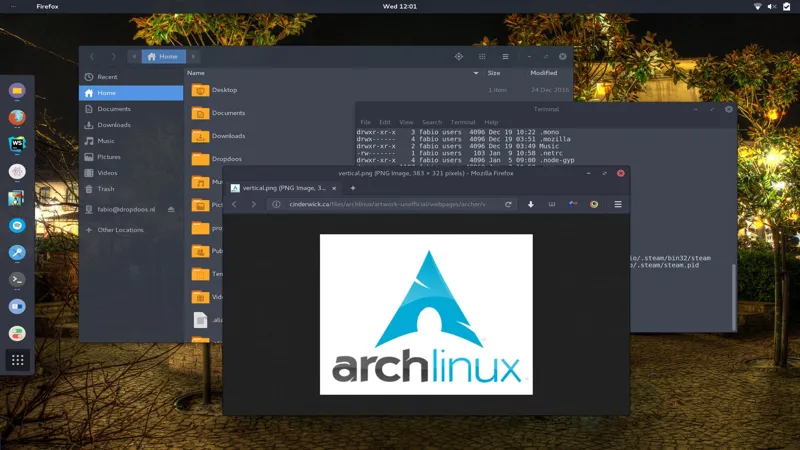Arch Linux stands out in the crowded landscape of operating systems, offering a unique blend of independence and flexibility. With its rolling release model and lack of corporate backing, Arch provides users with a lean and streamlined experience that requires a hands-on approach. While many perceive it as daunting due to its steep learning curve, the rewards of mastery are substantial for those willing to invest time and effort. This introduction will explore what makes Arch Linux distinct, from its minimal installation process to its vast community resources, including the invaluable ArchWiki, guiding users through their journey of customization and control.
| Attribute | Description |
|---|---|
| Distribution Type | Independent, rolling release model with no corporate involvement. |
| Installation | Lean and minimal; requires manual setup of desktop environments and packages. |
| Learning Curve | Steep; involves many manual steps and decisions during installation. |
| Package Manager | Pacman; manages official repositories and AUR (Arch User Repository) for additional software. |
| Updates | Rolling updates; always up-to-date with the latest versions of software. |
| Community Resource | ArchWiki; a detailed and comprehensive resource for installation and troubleshooting. |
| User Control | Offers a bloat-free experience; users choose what to install. |
| Development Philosophy | No corporate pressure; focuses on delivering a simple and lightweight Linux experience. |
What Makes Arch Unique?
Arch Linux stands out because it is an independent distribution, meaning it isn’t based on any other Linux version. Unlike many popular distributions that derive from older systems, Arch is built from the ground up. This independence allows Arch to remain free from corporate influence, focusing solely on its community’s needs. Users appreciate Arch for its minimalism and control, as they can customize their experience right from the installation process.
Another unique feature of Arch is its rolling release model. This means that instead of waiting for major updates, users receive continuous updates, keeping their system current with the latest software versions. This constant flow of updates contrasts with traditional point releases, where updates are bundled and released periodically. As a result, Arch users enjoy the latest features and improvements without needing to reinstall or upgrade their system.
Understanding the Rolling Release Model
The rolling release model is a core aspect of Arch Linux, emphasizing a continuous upgrade process. This means that whenever new software or security updates are available, they can be applied immediately, keeping the system up to date. While this offers the benefit of having the latest tools and features, it also introduces a risk of bugs or instabilities, which can occasionally disrupt the user experience.
However, the Arch community is proactive in addressing any issues that arise from these updates. If a bug is discovered, developers typically work quickly to fix it, often releasing patches within a day. This rapid response helps ensure that users can continue to enjoy a stable and functional environment, despite the inherent risks of a rolling release system.
By opting for the rolling release model, Arch users are part of an active community that values innovation and responsiveness. This model encourages users to engage with their system actively, allowing them to learn more about Linux and how to troubleshoot issues that may arise.
Frequently Asked Questions
What is Arch Linux known for?
Arch Linux is known for its rolling release model, minimal installation, and user-centric approach, allowing users to build their system from scratch without unnecessary bloat.
How does the rolling release model work in Arch?
In Arch, updates are delivered continuously as they become available, ensuring that your system is always up to date without waiting for major releases.
What is the ArchWiki and why is it important?
The ArchWiki is a comprehensive resource for Arch Linux users, offering detailed installation guides and troubleshooting tips, making it invaluable for both new and experienced users.
Is Arch Linux difficult to install?
Yes, Arch Linux has a steep learning curve due to its manual installation process that requires users to make several decisions without a simple installer.
What is pacman in Arch Linux?
Pacman is Arch Linux’s package manager, allowing users to easily install, update, and manage software from the official repositories.
Can I customize my Arch Linux installation?
Absolutely! Arch Linux allows you to choose and install only the packages and desktop environments you want, creating a personalized and efficient system.
What are the benefits of using Arch Linux?
Arch Linux offers a lightweight, customizable experience without corporate influence, allowing users complete control over their operating system and applications.
Summary
Arch Linux is a unique, independent operating system known for its minimal and manual installation process. Unlike many Linux distributions that are built on others, Arch stands alone without corporate influence. It uses a rolling release model, meaning users receive the latest updates continuously, although this can sometimes lead to bugs. While installing Arch may seem challenging, the ArchWiki provides extensive and detailed guidance to help users navigate the setup. Overall, Arch Linux offers a clean, bloat-free environment where users can customize their systems entirely according to their preferences.
